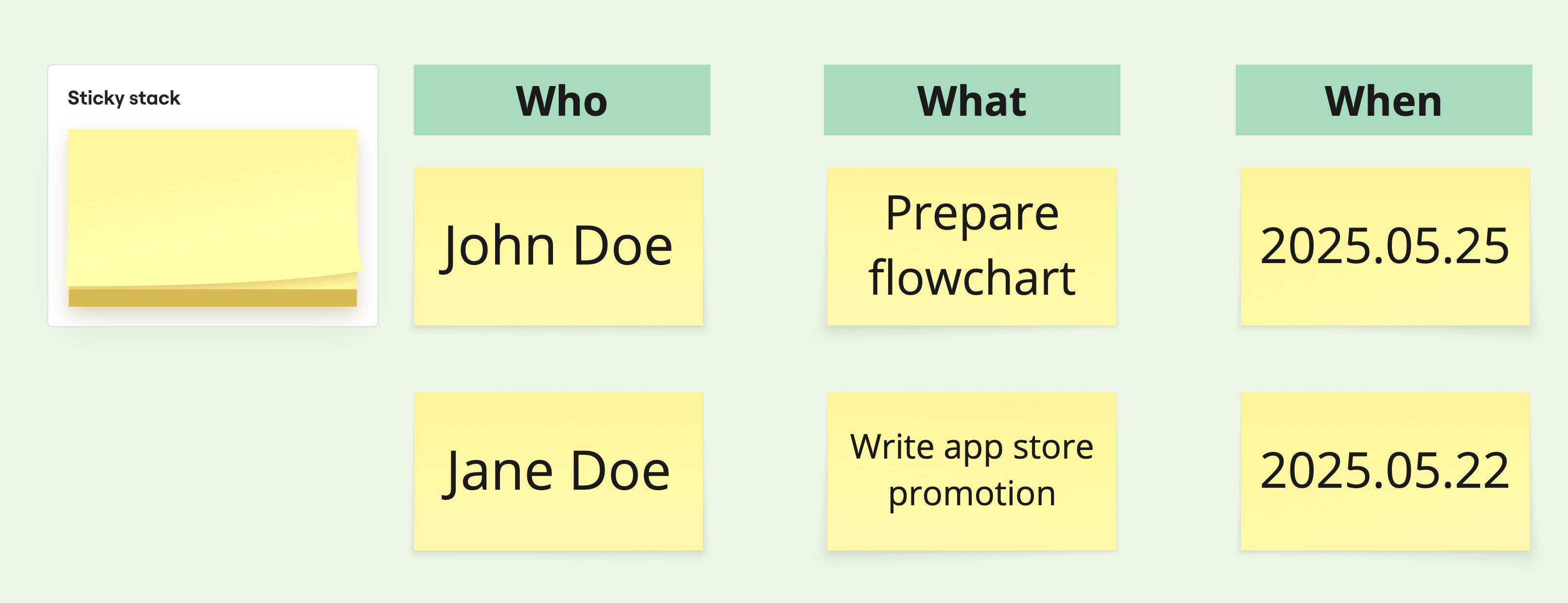
Sometimes the team comes up with action points, often in the form of tasks. How can we make sure those tasks actually get done? The "Who, What, When" framework is a simple way to define responsibilities, tasks and deadlines. Since it was introduced to our team, we've improved in getting the tasks done. It's a straightforward approach that can be applied to any team or project.
Who
The "Who" identifies the person responsible for completing the task. Assigning a task encourages accountability. If a task requires collaboration, consider assigning a group or team instead of just one person. That usually helps with getting everyone on the same page.
What
The "What" describes the specific task or action that needs to be completed. It should be clear and to the point. Use clear wording to help prevent misunderstandings.
When
The "When" sets the deadline or timeframe for the task. Having a clear deadline helps with prioritization and makes it more likely the task gets done on time.
How to Use the Framework
As discussions unfold, start identifying action points, these are the tasks that need to happen. Each task should be clearly assigned to an individual (or a group), so it's obvious who is responsible for what. Agree on realistic deadlines to keep things moving. After the meeting, follow up regularly to see how things are going and offer support if needed.
At the next meeting, review the status of the action points. If something hasn't been done, talk about why and adjust the plan if necessary to get back on track.
"Who, What, When" is a great visualization tool, which helps in making sure responsibilities are spread out in a sustainable way.